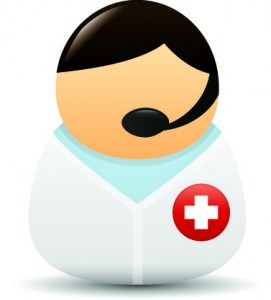Healthcare with Confidence
Tricuspid atresia is a congenital heart defect in which the in tricuspid valve is not formed.
In such a condition blood can not flow through the heart into the lungs to be enriched with oxygen, as occurs during normal development. As a result, the lungs can not provide the baby with oxygen. Children with tricuspid atresia often have shortness of breath and bluish skin.
Tricuspid valve atresia treated surgically.
Symptoms: blue tinge to the skin and lips (cyanosis), shortness of breath (dyspnea), fatigue, especially during feeding, slow growth, heart failure, fatigue and weakness, swelling of the legs, ankles and feet, swelling abdomen (ascites), sudden weight gain due to fluid retention, irregular or rapid heartbeat.
Causes of tricuspid atresia are heredity or Down syndrome. Risk factor can also be maternal rubella or other viral diseases in early pregnancy, alcohol drinking during pregnancy, poorly controlled diabetes, use of certain drugs during pregnancy, such as, for example, isotretinoin, a drug for the treatment of acne, and some anticonvulsant drugs.
Complications
The most significant complication of the tricuspid valve atresia is a lack of oxygen to the tissues of the child’s body (hypoxia).
While treatment significantly improves the outcome for infants with tricuspid atresia, they can still have complications later in life, even after surgery. Among these complications: the formation of blood clots that can lead to blockage of the pulmonary arteries (pulmonary embolism), or a stroke, rapid fatigue when participating in sports or other physical activity, heart rhythm disturbances (arrhythmia).
Diagnostics
Tricuspid atresia can be detected before birth. Due to the recent advances ultrasound, our experts can identify the defect during a routine ultrasound at pregnancy.
After giving birth, doctor may suspect a heart defect if child has a blue color of skin or breathing problems. When listening in this case, a specialist hears a heart murmur – an abnormal whooshing sound caused by turbulent blood flow.
For the diagnosis of tricuspid atresia is usually used echocardiography. This test uses sound waves that bounce off the baby’s heart to produce a dynamic image.
Echocardiography detects the absence of the tricuspid valve and right ventricle smaller than that of a healthy child. Since this test monitors bloodstream during it is also possible to measure the amount of blood that flows through the holes in the wall between the right and left sides of the heart. In addition, echocardiography can identify related heart defects, such as atrial septal defect or ventricular septal defect.
Treatment of tricuspid valve atresia
To ensure adequate blood flow through the heart into the lungs to obtain a sufficient amount of oxygen by the body of the child, requires surgery, and sometimes even more than one.
Types of operations for tricuspid valve atresia:
Atrial septostomy. During this procedure, doctor increases or creates an opening between the upper atrium of the heart to allow more blood to flow from the right atrium to the left atrium.
Bypass surgery. Set shunt from the main blood vessel (aorta) leading from the heart to the pulmonary artery to restore adequate blood flow to the lungs. Surgeons routinely implanted shunt during the first four – eight weeks of baby’s life. Nevertheless, children outgrow the shunt, which may result in another operation required in order to replace it. ⇒ More details about CABG
Glenn procedure. Set shunt between 3 to 6 months. This procedure restores blood flow, allowing oxygen-poor blood to flow directly into the lungs and reduces the load on the left ventricle, reducing the risk of damage.
Fontan procedure. This operation is usually performed to achieve a child two years old is to install the shunt, which provides full bypassing the right heart bloodstream thus poor oxygenated blood returning to the heart, goes directly into the pulmonary artery, which blood is then transported to the lungs.
Before the operation the cardiologist may recommend medication prostaglandins, which help enlarge the blood vessels and keep the ductus arteriosus and foramen ovale open.
To monitor the condition of the heart child will need lifelong follow-up, a cardiologist who specializes in congenital heart disease. The cardiologist will tell whether the child to continue taking preventive antibiotics before dental and other procedures. In some cases, the child’s cardiologist may recommend limiting vigorous physical activity.
Short- and medium-term outlook for children, timely past Fontan procedure, as a rule, are promising. The results for those children who have resorted to surgery later in life, usually worse. There may be a variety of complications, which sometimes require additional surgery. If circulation system in accordance with the procedure Fontan does not bring the desired result, may require a heart transplant.



